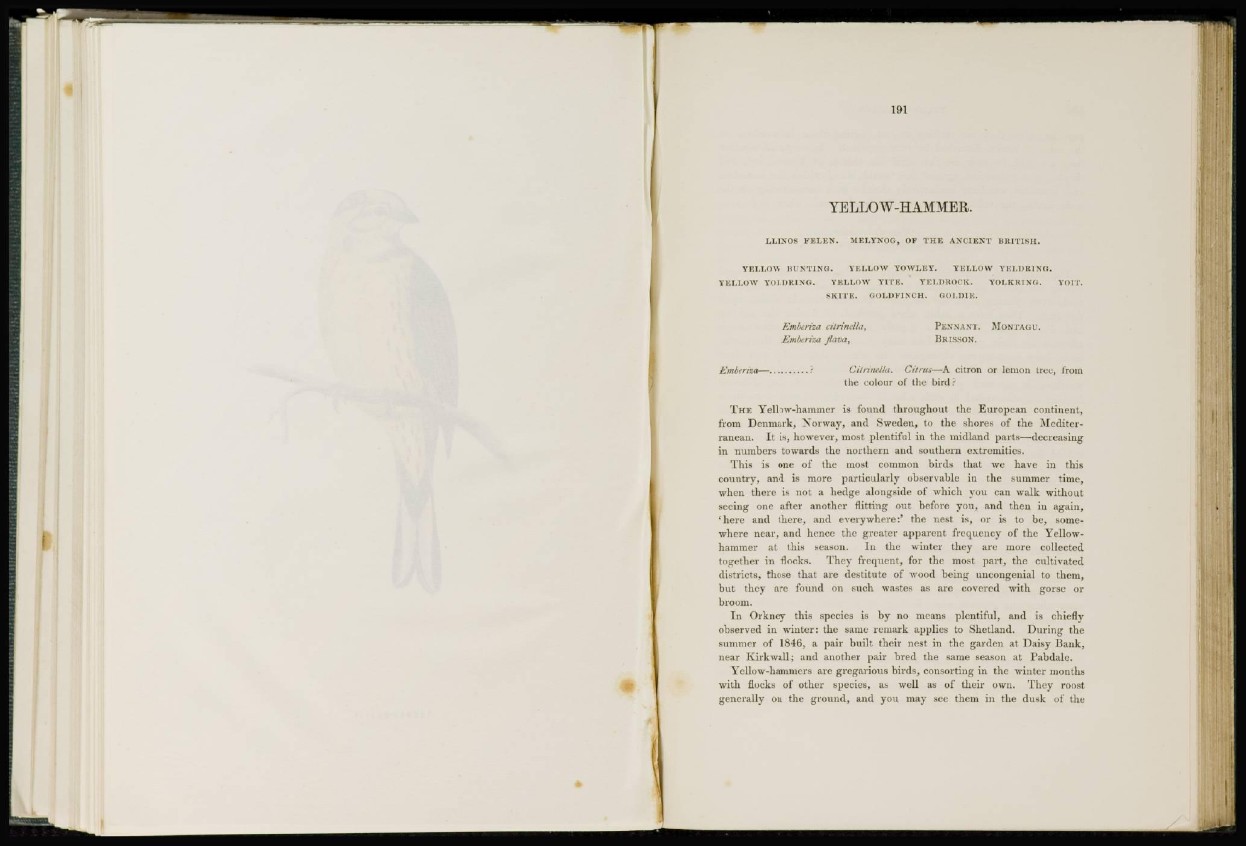
YELLOW-HAMMER.
LLINOS FELEN. MELYNOG, OF THE ANCIENT BRITISH.
YELLOW BUNTING. YELLOW Y0WLIÍY. YELLOW TELDEIMG.
YELLOW YOl.ORINO. YELLOW YIl' E . YELDROCEL. YOLKR1NG. YOIT.
SKITE. GOLDFINCH. GOLDIK.
Emberiza a'lrindhi, PENNANT. MONTAGU.
Emberiza flava, BRISSON.
Emberiza— ? Cilrnwlla. Citrus—A citron or lemon tree, from
the colour of the bird?
THE Yellow-hammer is found, throughout the European continent,
from Denmark, Norway, and Sweden, to the shores of the Mediterranean.
It is, however, most plentiful in the midland parts—decreasing
in numbers towards the northern and southern extremities.
This is one of the most common birds that we have in this
countrv, and is more particularly observable in the summer time,
when there is not a hedge alongside of which you can walk without
seeing one after another flitting out before you, and then in again,
' here and there, and everywhere:' the nest is, or is to be, somewhere
near, and hence the greater apparent frequency of the Yellowhammer
at this season. In the winter they arc more collected
together in flocks. They frequent, for the most part, the cultivated
districts, those that are destitute of wood being uucongenial to them,
but they are found on such wastes as are covered with gorse or
broom.
In Orkney this species is by no means plentiful, and is chiefly
observed in winter: the same remark applies to Shetland. During the
summer of 1 8 4 6 , a pair built their nest in the garden at Daisy Bank,
near Kirkwall; and another pair bred the same season at Pabdale.
Yellow-hammers are gregarious birds, consorting in the winter months
with flocks of other species, as well as of their own. They roost
generally on the ground, and you may see them in the dusk of the